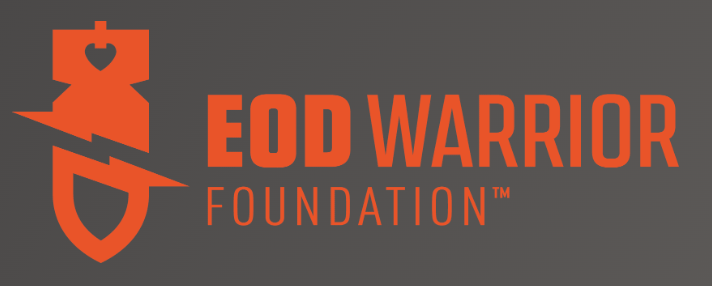Our Development Solution at a Glance:
👉 Full-stack website creation tailored to brand, UX, performance, and marketing needs.
👉 Regular CMS updates, backups, and security patching to keep the site secure and functional.
👉 Website optimization for speed, mobile responsiveness, and branding consistency.
👉 Seamless integration with SEO, PPC, social, AI and email initiatives.
👉 Proactive monitoring and analytics-based improvements, with refresh plans to sustain long-term value.
Brick Marketing provides technical web development for websites on all major CMS platforms. We plan and implement projects that enhance site performance, accessibility, page speed, structured data, analytics, and conversion paths. This work can include theme and plugin fixes, custom components, API integrations, form troubleshooting, and updates that support SEO, lead generation, and growth in qualified visitors.
We also offer ongoing website maintenance. This includes monthly on site and off site backups, core and plugin updates, server and application security monitoring, uptime checks, and routine health reviews. Our goal is to keep the site stable and fully functioning on the front end and the back end, reduce the risk of issues over time, and give owners and teams peace of mind.

Register for TrainingSchedule Intro MeetingGet Your Audit
FAQs About Brick Marketing’s Website Development Service
What is included in your website development solution?
We provide full stack website creation, CMS updates, security patching, speed optimization, mobile responsiveness, and integration with your marketing programs.
How do you keep websites secure and functional?
We perform regular updates, backups, and security monitoring to prevent downtime, protect user data, and ensure smooth site performance.
Do you optimize websites for performance and user experience?
Yes, we focus on speed, UX, mobile responsiveness, branding consistency, and clean navigation to deliver a seamless experience across devices.
How do you measure and sustain long-term website value?
We use proactive monitoring, analytics, and refresh plans to identify issues early, refine performance, and maintain long-term results.
Brick Marketing Client Reviews:

Brick Marketing’s digital marketing strategy has leveled the playing field
Brick Marketing’s well researched digital marketing strategy has provided Fishman Corporation with visibility and excellent leads. Fishman Corporation competes in a niche industrial segment that has been dominated by one corporate conglomerate for 50 years; we were specifically looking for a marketing partner that understood how to leverage SEO, pay per click advertising and social media to gain us visibility. We wanted to compete on the same level as the corporate giant. Brick Marketing has done this for us. We routinely show up high in organic searches, our web traffic has doubled and the leads that come in are well targeted. Brick Marketing’s digital marketing strategy has leveled the playing field; now the Davids’ can be as visible as the Goliaths.
Scott Beebe

Since we hired Brick Marketing, we have seen stronger social engagement & growth in website traffic
As a multi-location soccer club across New England and the Northeast, we rely on Brick Marketing for social media, content, and SEO, and they expertly handle the complex approvals and coordination that our company requires. Since we hired Brick Marketing, we have seen stronger social media engagement and steady growth in overall website traffic. We’re thrilled with the results and look forward to continuing to work with them.
Paul Athanasiadis

Brick Marketing has increased our website traffic by 315.43%
Great Results, Responsive Team, Ethical Strategies: The Brick Marketing team has become an invaluable extension of our marketing team, and one that has delivered steady growth from the get-go. The results speak for themselves – over the last two years, Brick Marketing has helped increase our website traffic by 315.43%. From the solid SEO foundation Brick Marketing built for GrowthForce during our initial onboarding, to our ongoing daily/weekly tasks and our monthly analytics and check in calls, our Brick team keeps us on track and up to date. They take the headache out of digital marketing so we don’t ever have to spend time in the weeds learning about the latest rules or digital challenges, and they are quick to answer any of our questions.
Kelly Boros

Our web traffic overall has risen more than 30%
Silvon Software teamed up with Brick Marketing to deploy a digital marketing strategy that would generate greater visibility for our company within a highly competitive market and drive more prospects to our website as a result. This has included website optimization based on a well thought out keyword strategy, launch of a corporate blog, and the promotion of Silvon content via industry forums and numerous social media sites. In just a few months, Brick Marketing’s efforts have Silvon showing up higher in organic searches. Our web traffic overall has risen more than 30% and continues to grow. We’re seeing consistent month-to-month growth in the amount of organic traffic coming from Google. And, our referral traffic from LinkedIn has been phenomenal — with initial increases as high as 468%! We couldn’t be more pleased with the results that Brick Marketing has achieved so far and highly recommend them as a strategic marketing partner that knows how to put SEO best-practices to work for its clients.
Pat Hennel

We saw a significant improvement in our B2B marketing results
Brick Marketing was great at guiding us along from the ground level on search & how to create more content which lead to more internet generated leads. We saw a significant improvement in our B2B marketing results after working with Brick Marketing. We could not have been more pleased with their work.
James Berry

Extremely happy with the overall quality of the writing provided by Brick Marketing
We were extremely happy with the overall quality of the writing provided by Brick Marketing. The team was thorough and quick to respond to our needs as they fluctuated with seasonality. Their attention to detail and collaboration efforts helped us deliver great content for our client’s ecommerce brands.
Joe Spada

Brick Marketing has done a great job with our SEO efforts
Brick Marketing has done a great job with our SEO efforts so far! They work closely with us to find the best course of action to take with our website and also guide us through the strategic implementation of the plan, Their team has worked closely with ours to learn about our business and create the most critical information we need to create rich, engaging content and increase our visibility across the web and social media. We look forward to continuing this journey with them!
Dean Bubello

Traffic has increased over 80% year-over-year
When we started working with Brick Marketing, we had just been subjected to a Google algorithm update and our websites both took substantial hits to traffic. Within a few months, Brick has taken both of our websites to pre-algorithm traffic and conversion levels, and for the CallFinder site, the traffic has increased over 80% year-over-year. Their expertise in SEO, responsive design, and content marketing helped us turn the situation around, and we could not be happier with the results we’ve seen in just our first four months of working with them. The team we work with at Brick Marketing is always available for off-the-cuff consultations and are at the ready to provide recommendations and suggestions to improve our site’s appearance and performance. They are truly a hands-on partner, which is immensely valuable to our business.
Jeanne Landau

When I think of Brick Marketing I think Thank You!!!
When I think of Brick Marketing I think Thank You!!! We had previously used another digital marketing firm and although I think they were doing their job, it never felt right. But we didn’t quite know why. I did a lot of research and was drawn to Brick Marketing because of their customer feedback, white hat philosophy and TRANSPARENCY.
Adam Reed

Delivered a 59% increase in our web traffic
Initially, when we sought out assistance in SEO, we felt the Brick Marketing search engine marketing offering may be too robust for the needs of our website. In hindsight, I am very glad that we decided their digital marketing services were worth the investment as they have proved to be an extremely valuable partner. Their tremendous expertise in digital marketing practices and content strategy has already delivered a 59% increase in our organic web traffic. Brick Marketing has worked in close collaboration with our marketing team, tailoring their efforts to our specific needs as an FDA regulated company to ensure we are putting forward the highest quality content. I look forward to continuing our partnership with the Brick Marketing team to surpass our digital marketing goals!
Brett Prince

Superior knowledge of marketing on the internet
I have had the good fortune to work with Nick Stamoulis and his team at Brick Marketing and it was clear form the get-go that Brick Marketing had superior knowledge of marketing on the internet. The digital marketing campaign and technical writing that Brick Marketing provides has been impressive, where in the past we struggled to find the high levels of competence in these two skill sets. We are only just beginning with Brick Marketing and look forward to growing with their expert guidance. Thank you to the Brick Marketing team!
Craig Raubenheimer

Raised our digital marketing efforts to a new level
When we began searching for an SEO service provider, our team had a limited understanding of what SEO entailed. After interviewing other digital marketing companies, it was clear from speaking with Brick Marketing, that they do so much more than developing content and SEO. By examining our trade show presence, blogging practices and other listings, Brick Marketing has helped us work through industry specific obstacles to raise our digital marketing efforts to a new level.
Catie Moyer

We highly recommend the Brick Marketing team!
We interviewed several digital marketing companies and from the very first discussion with Nick at Brick Marketing, there was a meeting of the minds. As a small company that prides itself on “a personal touch”, we found that and much more with the Brick team. Shortly after we engaged with Brick to update our brand and marketing approach, which included refreshing our website, adding SEO, social media, a blog page and all the other elements needed for a modern B2B company, the Brick Marketing team got to work delivering results right from the beginning. They have a “lean and mean” collaborative process and are skillful and adept at gathering the key information needed to generate creative ideas and a resulting look-and-feel to match our business…
Eileen Smouha

Brick Marketing is simply the best.
After struggling for years to find the right web marketing firm, it was a breath of fresh air to discover Brick Marketing. On my initial call with Brick Marketing President, Nick Stamoulis, it was immediately obvious that he genuinely cared about helping our company, not just bringing another client on board. Since then, their work with us has been fabulous. Our dedicated specialist always takes the time to explain every step of their efforts. In addition to SEO, content marketing and PPC, we also chose Brick Marketing to handle our website migration to WordPress, and once again, couldn’t have been happier with our decision to do so. The Brick Marketing team made the process easy and painless, and made many helpful suggestions to improve our website that we would have never thought of on our own. Brick Marketing is simply the best.
Kristen M. Steele

Brick Marketing uses an ethical, strategic approach to SEO
We have worked with a few other SEO firms and consultants in the past, but, by far,
Brick Marketing has been our best experience. They are very knowledgeable about the search engine landscape, and help us respond to what seem like constant changes to the algorithms. They have helped our company correct some of the issues created by prior SEO firms, both in terms of on-site optimization and off-site programs. I appreciate the fact that Brick Marketing uses an ethical, strategic approach to SEO that creates a solid, lasting foundation for the future. They are reliable, responsive, and the quality of their deliverables is top-notch. We are happy we chose to work with them, and I would recommend them to anyone looking to engage a new SEO firm.
Bob Bennett

Our website’s manual penalty action was successfully revoked
Brick Marketing impressed us from the get-go with their enthusiasm, know-how and commitment to upstanding SEO techniques. They were communicative, responsive and transparent throughout, detailing an extensive game plan and delivering on every count. Thanks to effective collaboration and their meticulous methodology, our website’s manual penalty action was successfully revoked.
Laura J Lowe

Our website traffic has increased
The Brick Marketing team, was critical to ensuring that our new Web site is optimized to drive maximum traffic. Our keyword rankings have improved and traffic has increased thanks to their assistance and advice. In addition, they executed a strategic digital marketing program that helped further increase web traffic.
Lauren LaFronz

cost effective “answer” to creating a viable web presence
From the beginning, our new company, AA Global Printing, has provided a superior global service, backed by a solid operations team. What we didn’t have were marketing resources to support the growth of our client base and to build a strong online presence. Fortunately, Brick Marketing has given us a structured website development process/solution and a cost effective “answer” to creating a viable web presence. Moreover, our account rep has been a professional and knowledgeable resource at every turn. Thanks to Nick Stamoulis and the Brick Marketing team, AA Global Printing is marketing with all the right tools ranging from SEO, strong content, a weekly blog, and easy site navigation for our visitors.
Adam Gould

Brick Marketing helped us meet our goals
We turned to Brick Marketing to assist in driving traffic to our website and we weren’t disappointed. The flexible approach of the digital marketing firm Brick Marketing helped us meet our goals, drive traffic to our website, and increase the number of calls we received regarding our services. Thank you!
Ken Burt

We’ve seen unbelievable success & owe much of our online lead generation to Brick Marketing’s efforts
I didn’t realize how much we were missing from not having an online presence until I started working with the digital marketing firm Brick Marketing. The Brick Marketing team took the time to guide us through the digital marketing process and helped bring our company into the online world. We’ve seen unbelievable success with our new website & owe much of our online lead generation to Brick Marketing’s efforts.
George Athanasiadis

Our goal for better presence on the internet has been achieved!
I had worked with at least three other digital marketing companies before I was introduced to Brick Marketing. But when I met Nick Stamoulis at Brick Marketing, I knew that I was working with an honest and reputable company that would guide me through the world of search engine marketing. In the six months since working with Brick Marketing, our goal for better presence on the internet has been achieved!
Peter Feinmann

Brick Marketing has gotten us real results
I have been working with Brick Marketing for over 4 years now. Brick Marketing sends me the reports every month, but I don’t need to read them. I have worked with many other companies that made promises they could not keep. Brick Marketing has gotten me results and that is why I continue to work with them. I don’t have to micro-manage anything they do. I know that they always do what they say they are going to do. If you are looking for an website marketing company, I would say, look no further as you have found the one that will do the job right! In addition to doing an excellent job, Nick Stamoulis is a pleasure to work with.
Alan Cline

Love working with the team at Brick Marketing!
Love working with the team at Brick Marketing! They are always available to answer my questions and assist with any concerns. I am very impressed with their thoroughness and ability to stay organized. Their passion and energy is always shown during conversations on our account.
Corey Savage

Highly recommend Brick Marketing to all of my clients
After working with many other website marketing firms and not being satisfied I finally was introduced to the Brick Marketing President and Founder, Nick Stamoulis. Nick Stamoulis has educated me about search and has provided me with a well rounded digital marketing package, not only does he offer top quality services he also educates his clients and spends the time to explain everything and their pricing is competitive. I will highly recommend Brick Marketing to all of my clients. Brick Marketing is an A+ for web marketing.
Mike Cardella

Brick Marketing has been a tremendous resource for our business
Brick Marketing has been a tremendous resource for our business. Through their expertise with the ever changing world of digital marketing, our web presence is as strong as ever. Our working relationship with Nick Stamoulis and the Brick Marketing team has been outstanding. Thank you Brick Marketing!
Ellen Parlee

Went above and beyond to help us with any digital marketing issues
We hired Brick Marketing to manage our SEO, but they ended up also managing our company blog, social media marketing, helped us launch a pay per click advertising campaign, migrated our website to a new domain and so much more! Our dedicated Marketing Manager at Brick Marketing is always quick to respond whenever we had a question and went above and beyond to help us with any digital marketing issues.
Mory Creighton

Dependable, professional digital marketing company
Brick Marketing has been a dependable, professional digital marketing company that has helped us get results. In the last 6 months of using their services, visits to our website have increased by almost 30%. Our dedicated digital marketing manager was pleasant to deal with. Her suggestions for articles and press releases were industry specific. Brick Marketing always answered our phone calls and emails within an hour which made us feel valued as a client. I would recommend Brick Marketing to all businesses to handle their SEO and digital marketing needs.
JoAnne Loftus

Brick Marketing is rock solid and essential in building a strong marketing foundation
Though we have a relatively new working relationship with Brick Marketing, I can still wholeheartedly endorse and recommend them as sincere, knowledgeable people who, I believe, can be of great value to any business. For my small business, I view Brick Marketing as an additional employee, effectively fulfilling a role that no one else in the company has the time or expertise to properly execute. I think the true value of having Brick Marketing as this additional (low cost) employee and advisor will become clear over the course of this year…
Jeff Nicholson

I couldn’t give a stronger recommendation; they are simply great!
When we came to Brick Marketing initially, we had a small subset of challenges we didn’t have the bandwidth to tackle in house. Our idea was simply to send out the work and be done with it. A one-shot deal. What we found mid way into the first project, was that Nick Stamoulis and Brick Marketing had a depth of understanding and approach to solving our Search Engine Marketing problems that we had not considered; solutions that dramatically improved our search engine ranking position on terms and improved the overall size of our index listing (by more than 25% in the first two months)…
Connie Childrey

Professional, timely, thorough
After searching extensively for a firm to aid in ramping up our Social Media efforts we choose Brick Marketing and have never looked back – plus, enlisted their services for SEO, Social Media, PPC and more. The Brick Marketing team are professional, timely, thorough and take the time to work through and explain each task step by step. In my experience in working with many outside agencies who over-promise and under-communicate, I can truly state that Brick Marketing is levels above all others and vested in our relationship. We feel they are not just a consultant, but an integral part of our team.
Jodi Murphy

Increased our search engine traffic
We engaged Brick Marketing for digital marketing related activities for our website B2B.com and they did a fantastic job in assessing our website and finding out what was needed to optimize content and improve search engine traffic. In a short span, they improved the quality of in-bound links and increased our search engine traffic by over 100%. I highly recommend Brick Marketing for any SEO or digital marketing related projects.






























































































